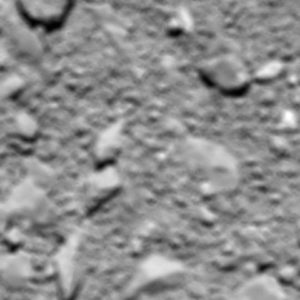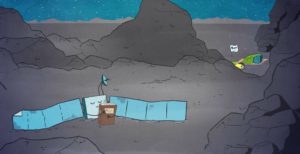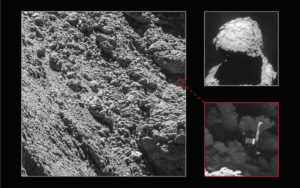The European Space Agencies Rosetta mission ended today, September 30th, with the crash landing of the Rosetta spacecraft on comet 67P, its primary target over its 12 year mission. Even though its original launch was delayed resulting in a change of target, and its secondary payload, the Philae lander, had a much shorter mission than it was originally supposed to, in 2014 it still successfully made the first landing on a comet, and the Rosetta probe successfully orbited the comet, taking amazing photos and making incredible measurements of the space surrounding the comet right up to the end, and what an end it was.
The spacecraft was commanded to deorbit and, very lightly, crash into the comet. Comets are very lightly held together objects, with gravity so weak that you or I could easily jump off of one and escape its pull; this alone makes the successful landing of Philae back in 2014 all the more impressive, since the hard part wasn’t getting down to the comets surface, but instead staying on it and not bouncing back into space. In fact, the lander was intended to harpoon into the surface and secure itself, but this didn’t happen, and the lander bounced several times before coming to rest in a small nook in the comet, shaded partially from sunlight. It only operated for a few days, but it provided quite a bit of information on the landing site.
As for Rosetta, I would presume it to be in some recognizable shape, probably beat up quite a bit but still mostly in one piece. As mentioned earlier, on the way down the probe was taking photos and making measurements as quickly as it could, and sending them back to Earth, giving us even greater detail of the very close surface than Philae did back in 2014.
An interesting note is that the Philae lander was lost after its landing, and for the next 2 years, images were scoured to try to find its location to better understand not only just how it landed, but what the area physically is like to better make sense of the returned data. In September 2016, with less than a month left in the mission, Rosetta found its friend.

The probe and lander were personified in an online video and comic series produced by the ESA to better show to the public what was going on, and the craft had their own twitter and facebook accounts to keep fans informed. I have to admit I shed a tear for the mission to end, as I always find it sad that such amazing machines as these space probes inevitably meet their ends one way, or another. Next year we have the end of the Cassini mission, and in several years, who knows when, we will inevitably have the end of Juno. One day Voyager 1 and 2 will finally send their last signals, and, like the Pioneers before them, they will drift silently out into the stars.
It’s nice to know though that they are still out there. Some have been destroyed, intentionally sent into the planets they spent their lives studying, but others will drift forever in our solar system, and beyond.
Good job Rosetta, and Philae. You were quite the impressive machines.
https://en.wikipedia.org/wiki/Rosetta_(spacecraft)
http://rosetta.esa.int/


